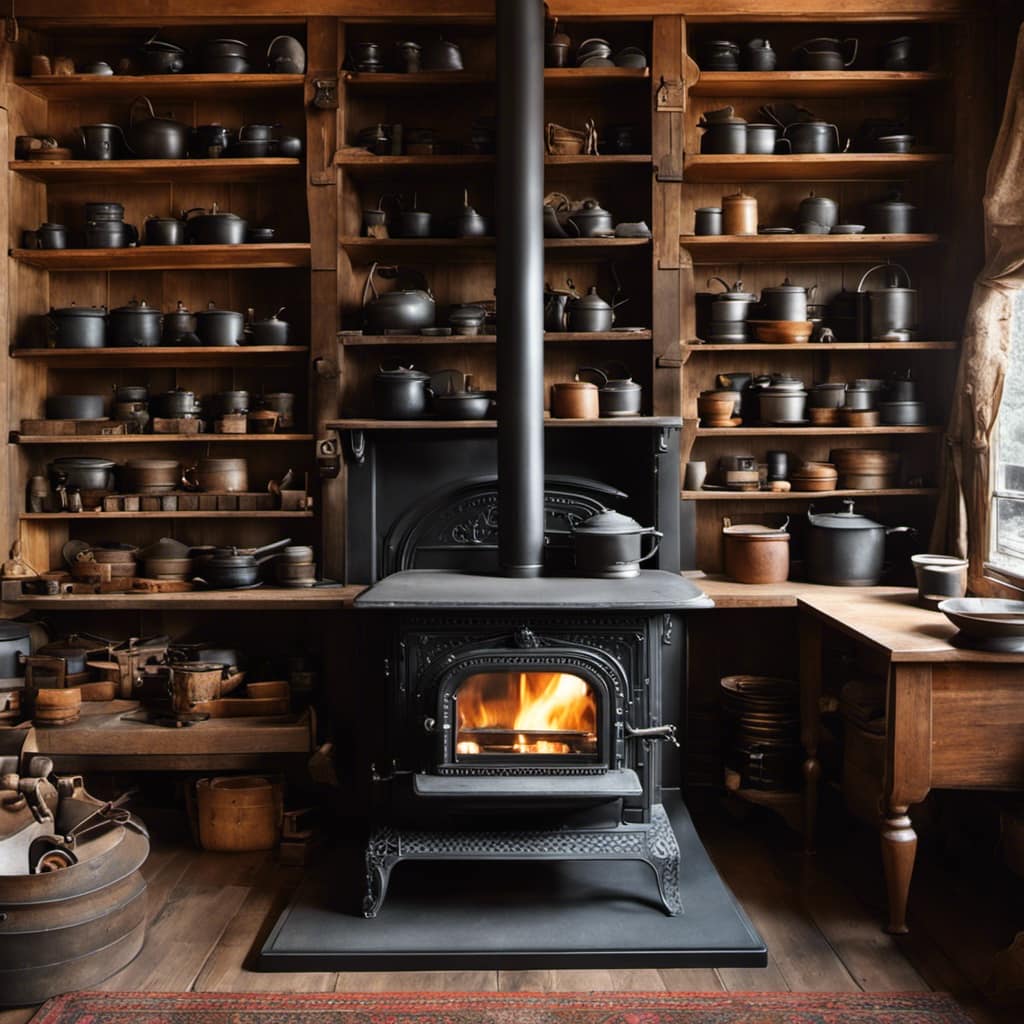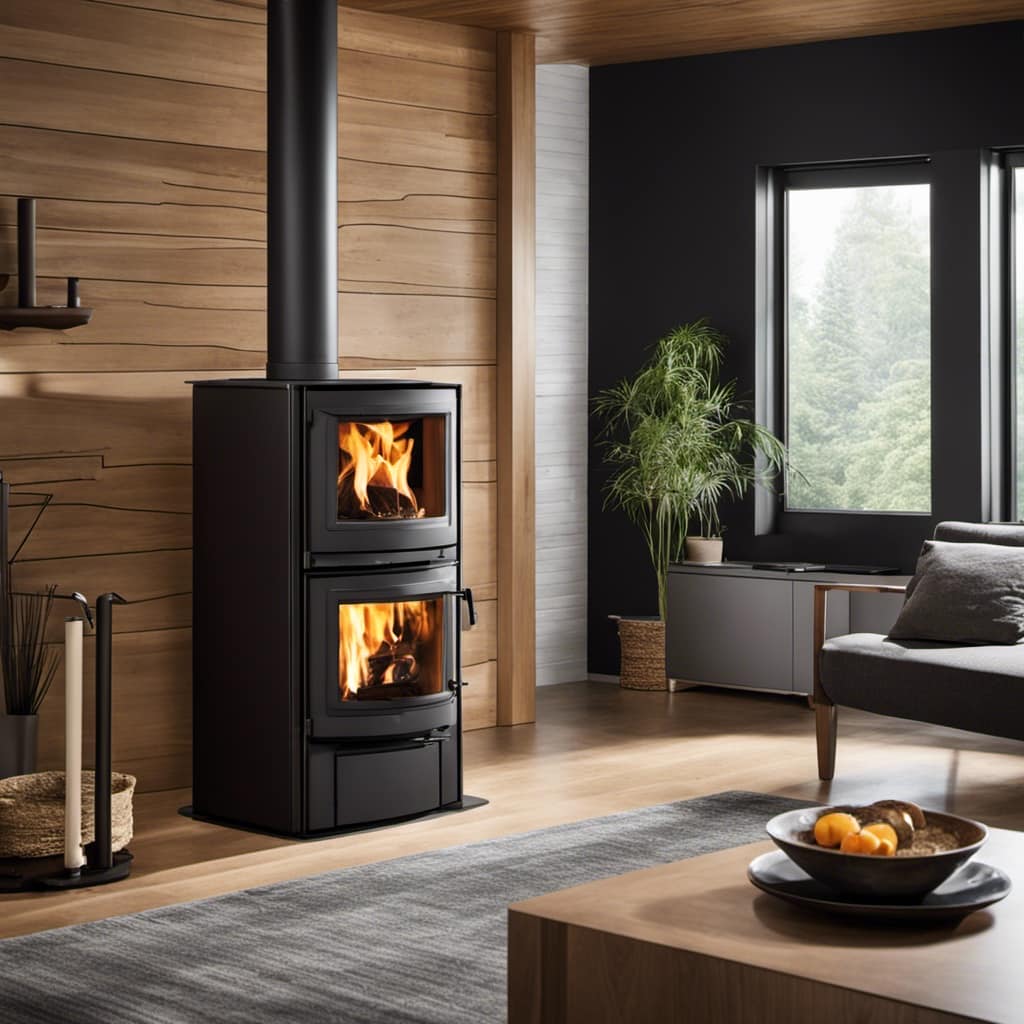
As a fan of wood stoves, I have always been fascinated by the maximum temperatures that these incredible heating devices can achieve.
Well, wonder no more! In this article, we’ll delve into the science behind heat generation in wood stoves, explore the factors that affect their temperature, and uncover the maximum limits they can reach.
From the types of wood used to the design of the stove itself, we’ll leave no stone unturned in our quest to understand the fiery potential of these cozy companions.
Key Takeaways
- The combustion process in wood stoves involves ignition, flaming combustion, and smoldering combustion.
- Heat transfer mechanisms in wood stoves include conduction, convection, and radiation.
- Factors such as regular cleaning and inspection, soot and creosote buildup, type and quality of wood, and airflow control affect the temperature of a wood stove.
- The heat output of a wood stove is influenced by factors such as BTU measurement, proper ventilation, wood species, moisture content, density, resin content, and the design of the stove.
The Science of Heat Generation in Wood Stoves
I’m fascinated by the science behind how hot wood stoves can get. Understanding the combustion process and heat transfer in wood stoves is key to unraveling this mystery. When we burn wood in a stove, a chemical reaction called combustion occurs. During combustion, the wood undergoes a complex series of chemical reactions, releasing energy in the form of heat and light.

The combustion process in wood stoves can be broken down into three stages: ignition, flaming combustion, and smoldering combustion. Ignition is the initial phase where heat is applied to the wood, causing it to reach its ignition temperature and start burning. Flaming combustion is characterized by the presence of visible flames and occurs when volatile gases released from the wood mix with oxygen, creating a chemical reaction that produces a significant amount of heat. Smoldering combustion occurs when the wood burns without a visible flame, primarily due to the presence of charred wood and lack of oxygen.
Heat transfer in wood stoves happens through three mechanisms: conduction, convection, and radiation. Conduction is the transfer of heat through direct contact between the hot stove surface and the cooler air or objects nearby. Convection involves the movement of heated air, as it rises from the stove and circulates around the room, distributing the heat. Radiation is the emission of heat energy in the form of electromagnetic waves, which can travel through space and directly heat objects in its path.
Factors Affecting Wood Stove Temperature
The temperature of a wood stove can be influenced by various factors. One important factor is wood stove maintenance. Regular cleaning and inspection of your wood stove is essential to ensure it operates at its optimal temperature. Soot and creosote buildup can decrease the efficiency of your stove and result in lower temperatures. Additionally, checking and replacing gaskets and seals will help prevent air leaks, which can also affect temperature control.
Another factor to consider is the type and quality of the wood you use. Hardwoods, such as oak or maple, provide more heat and burn longer than softwoods like pine. Ensuring that your wood is properly seasoned and dry will help maintain a consistent temperature.
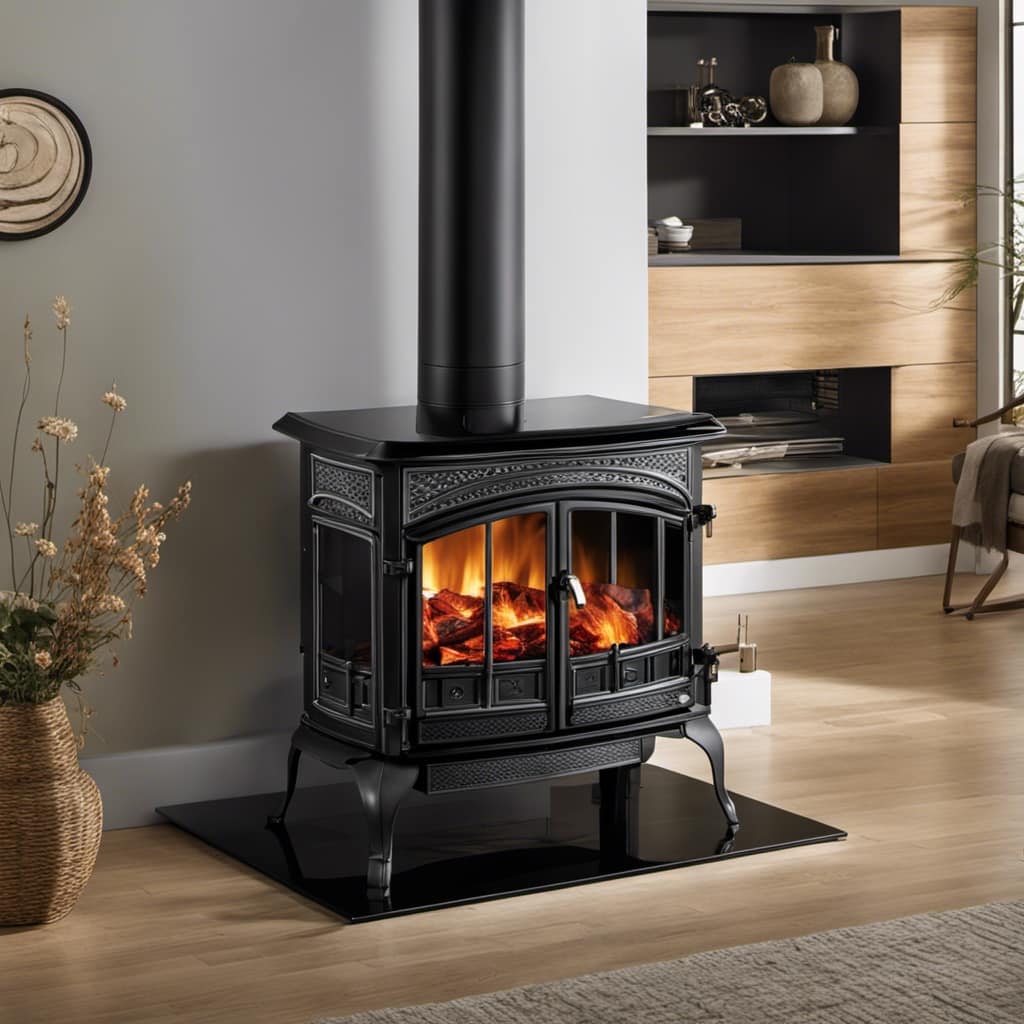
Finally, controlling the airflow in your wood stove is crucial. Adjusting the damper and using the air controls effectively will allow you to regulate the temperature. By understanding and implementing these factors, you can maintain a steady and comfortable temperature in your home with your wood stove.
Now that we’ve explored the factors that affect wood stove temperature, let’s dive into understanding BTUs: how much heat can a wood stove produce.
Understanding BTUs: How Much Heat Can a Wood Stove Produce
As an expert in wood stoves, I’m often asked about the heat output of these appliances. Understanding BTUs is crucial in determining how much heat a wood stove can produce.
BTUs, or British Thermal Units, measure the amount of heat energy needed to raise the temperature of one pound of water by one degree Fahrenheit. By understanding BTUs, we can accurately assess the maximum temperature and heat output that a wood stove can achieve.
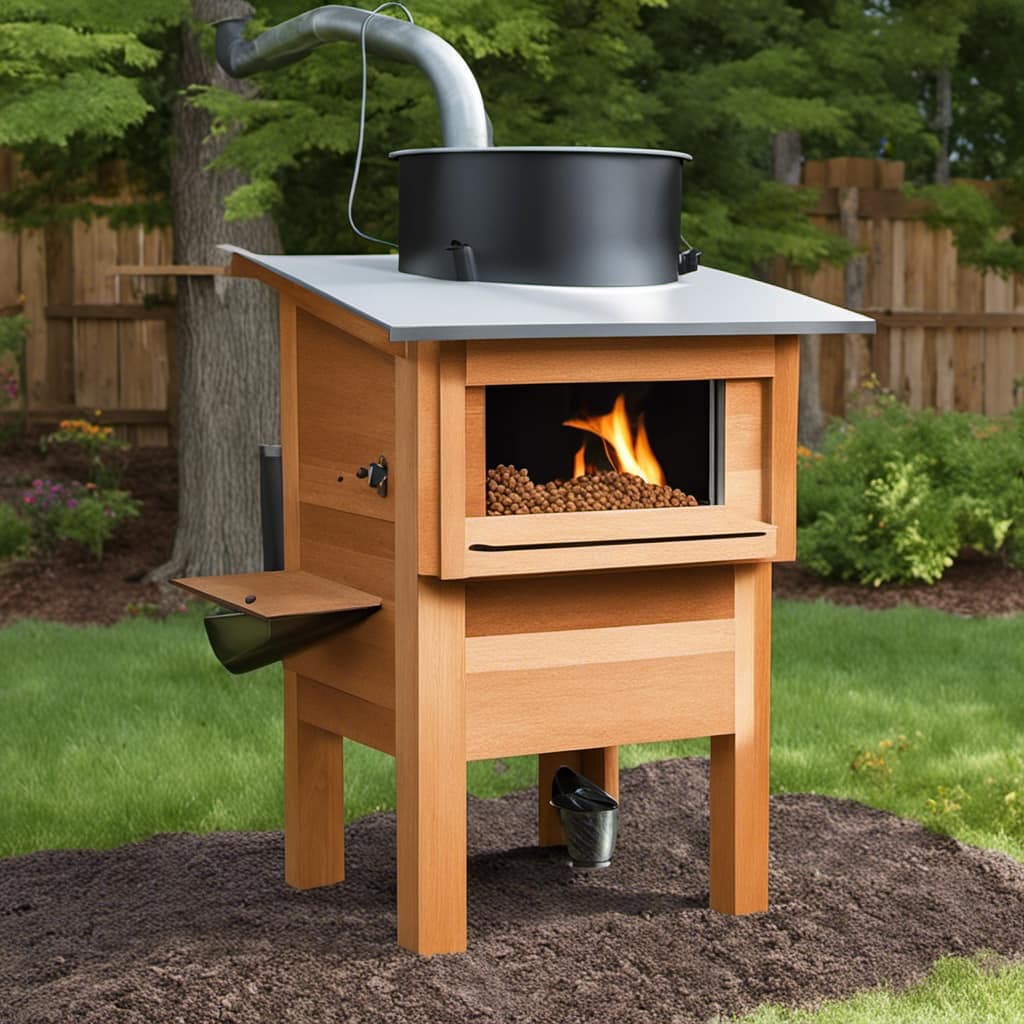
Maximum Wood Stove Temperature
I can feel the intense heat radiating from the wood stove as it reaches its maximum temperature. Wood stoves can get extremely hot, and it’s important to understand the safety precautions associated with them. Here are some key points to consider:
-
Proper Ventilation: Ensure that your wood stove is properly installed and has adequate ventilation to prevent the buildup of harmful gases.
-
Clearance Requirements: Maintain the recommended clearance distances between the stove and combustible materials to prevent the risk of fire.
-
Regular Maintenance: Clean the stove regularly to prevent the accumulation of creosote, a highly flammable substance that can cause chimney fires.
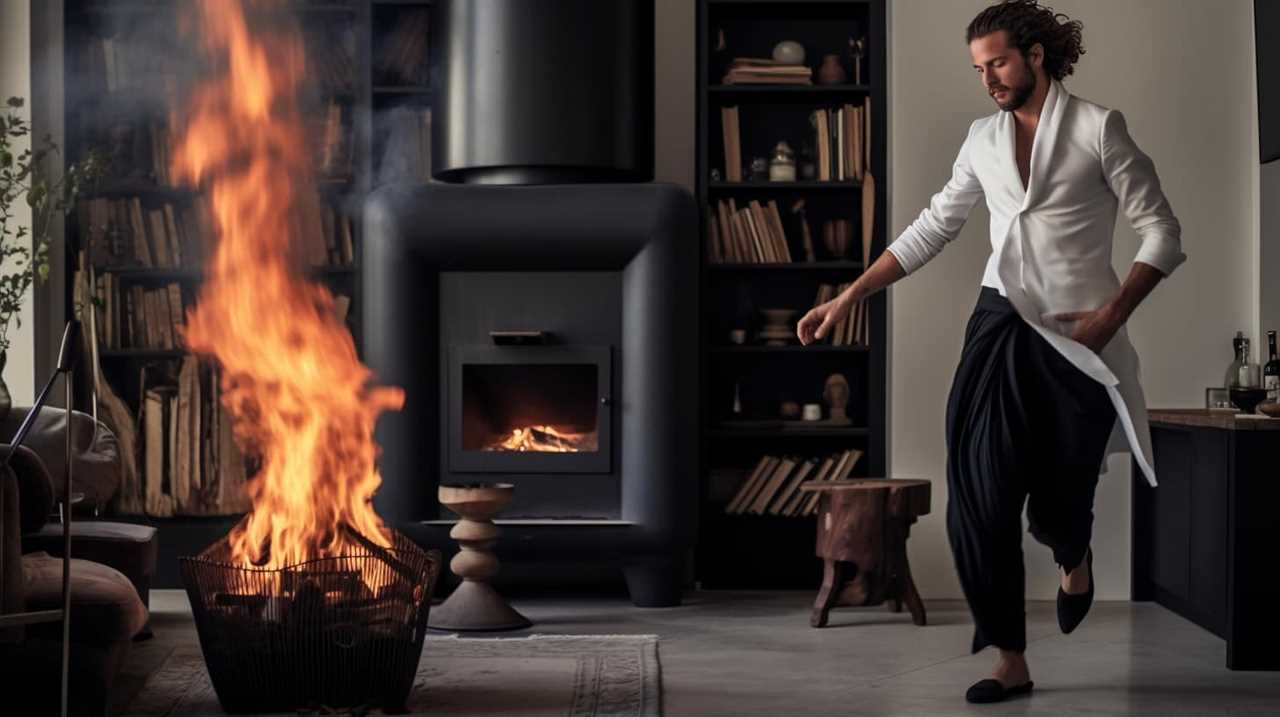
-
Use of Protective Gear: When handling or operating the stove, wear heat-resistant gloves and use a fireplace screen to protect against flying sparks.
Heat Output Measurement
Feeling the intense heat radiating from the wood stove, I’m curious about how the heat output is measured. Heat output refers to the amount of heat energy produced by a wood stove. It’s typically measured in British thermal units (BTUs) per hour.
To determine the heat output, various factors are considered, such as the type of wood being burned, the combustion efficiency of the stove, and the heat transfer methods employed. The heat transfer methods in a wood stove include radiation, conduction, and convection.
Radiation is the primary method and involves the transfer of heat through electromagnetic waves. Conduction occurs when heat is transferred through direct contact between objects, while convection refers to the transfer of heat through the movement of air.

It’s important to ensure proper ventilation in a wood stove to prevent the buildup of harmful gases, such as carbon monoxide, and to maintain efficient heat transfer.
Types of Wood and Their Impact on Stove Temperature
When it comes to wood stoves, the type of wood you use can have a significant impact on the temperature it produces. Different wood species have different heat values, with hardwoods generally producing more heat than softwoods.
Additionally, the moisture content of the wood plays a crucial role, as wet or green wood tends to burn at a lower temperature and produce less heat compared to well-seasoned, dry wood.
Wood Species and Heat
Based on my research, different wood species can produce varying levels of heat in a wood stove. The heat transfer in wood stoves depends on the wood species being burned. Here are some key factors to consider:

- Moisture content: Wet wood requires more energy to burn and produces less heat.
- Density: Dense wood species like oak and hickory burn slower and produce more heat.
- Resin content: Softwoods like pine contain more resin, which leads to higher heat production.
- BTU value: Different wood species have different BTU (British Thermal Unit) values, which indicate the amount of heat they can produce.
Wood stove efficiency relies on selecting the right wood species. Using dry, dense hardwoods with high BTU values will maximize heat output and minimize waste. It’s essential to understand these factors to ensure optimal performance and heat production in wood stoves.
Moisture Content’s Effect
I’ve noticed that using wet wood in a wood stove results in less heat production. This is due to the impact of moisture content on combustion and wood stove performance. When wood with high moisture content is burned, a significant amount of energy is wasted on evaporating the water instead of producing heat. The table below illustrates the moisture content and its effect on wood stove performance.
| Moisture Content | Effect on Combustion | Effect on Heat Production |
|---|---|---|
| Below 20% | Efficient combustion | Maximum heat production |
| 20-25% | Slower combustion | Reduced heat production |
| Above 25% | Inefficient combustion | Minimal heat production |
To maximize the heat output of a wood stove, it is important to use wood with a moisture content below 20%. This ensures efficient combustion and the highest heat production. Properly seasoned firewood is essential for optimal wood stove performance.
The Role of Stove Design in Heat Output
The design of the wood stove greatly affects the amount of heat it can produce. Wood stove efficiency and heat transfer mechanisms play a crucial role in determining how hot a wood stove can get. Here are some key factors to consider:

-
Insulation: A well-insulated wood stove retains more heat, allowing it to reach higher temperatures. Look for stoves with thick fireboxes and insulated doors to maximize heat retention.
-
Combustion system: Efficient wood stoves incorporate advanced combustion systems that promote complete and clean burning. These systems optimize the air-to-fuel ratio, ensuring that more heat is generated and less is lost through the chimney.
-
Heat exchange surfaces: Stoves with larger heat exchange surfaces, such as baffles and secondary burn chambers, increase the contact between the hot gases and the stove’s body. This maximizes heat transfer, resulting in higher temperatures inside the stove.
-
Air circulation: Stoves with built-in fans or blowers help to distribute heat more effectively throughout the room. These fans enhance the convection heat transfer process, allowing the stove to achieve higher temperatures.
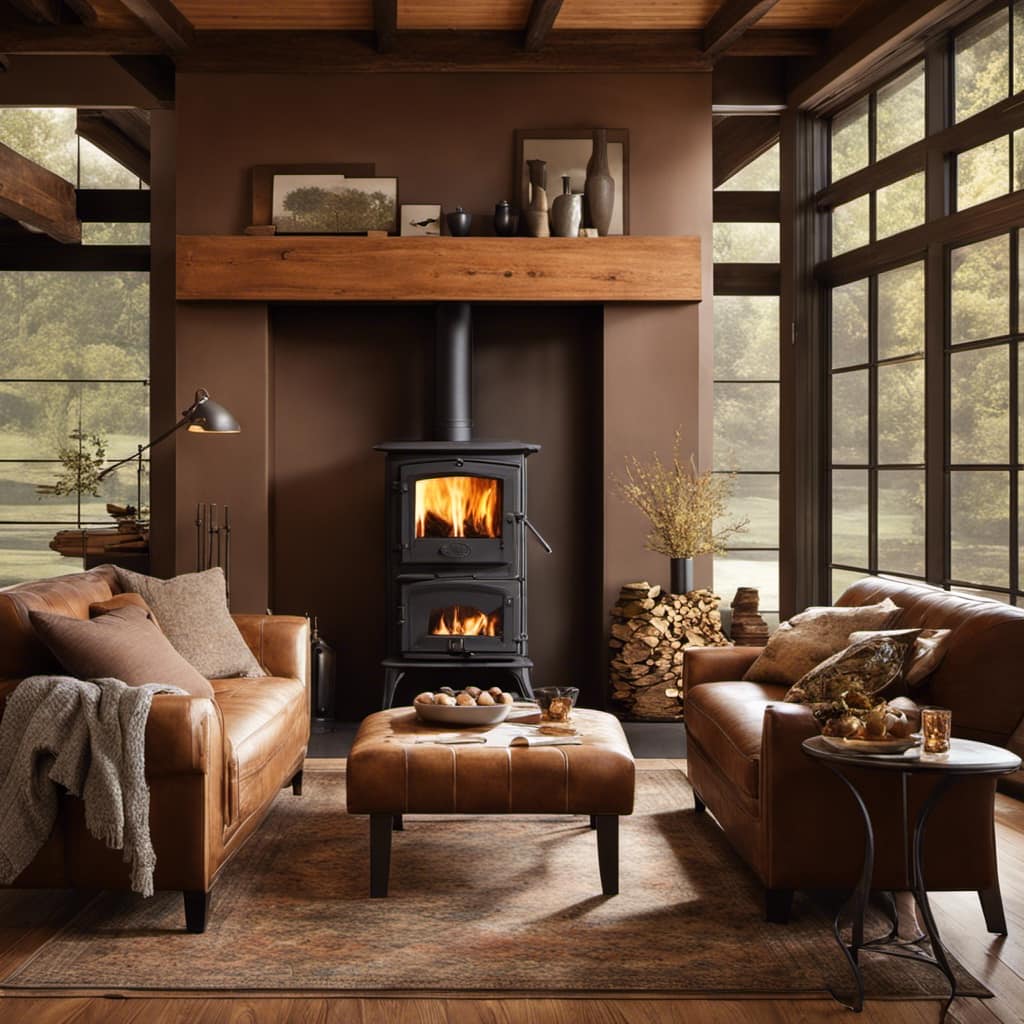
By considering these design factors, you can maximize the efficiency of your wood stove and achieve the hottest fire possible.
Now, let’s explore some tips for getting the most out of your wood stove and maximizing its heat output.
Maximize Efficiency: Tips for Getting the Hottest Fire in Your Wood Stove
To achieve optimal heat output, I need to focus on maximizing the efficiency of my wood stove. There are several tips and techniques for improving efficiency and maximizing heat output.
First, it’s important to ensure that the wood stove is properly sized for the space it’s heating. A stove that’s too small will struggle to heat the room, while a stove that’s too large will waste energy and overheat the space.
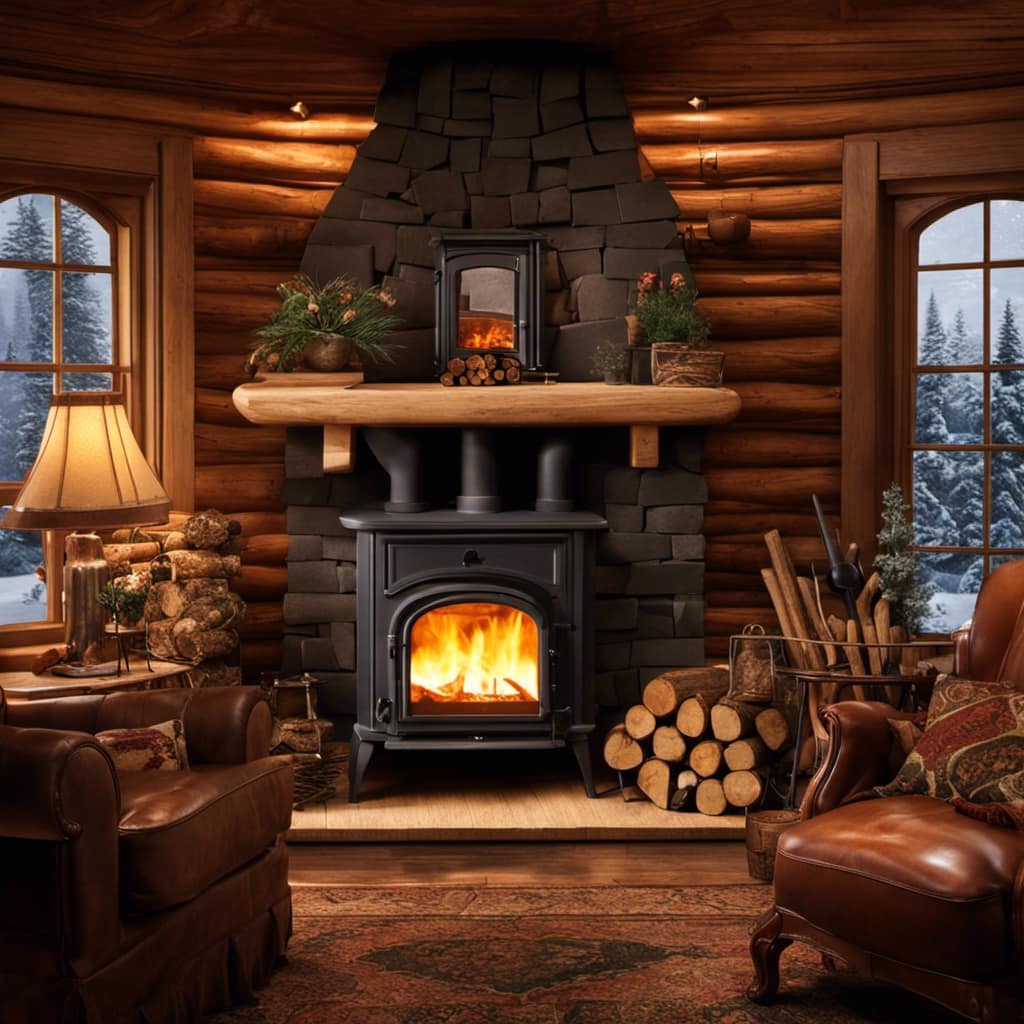
Additionally, using dry and seasoned firewood is crucial for efficiency. Wet or green wood contains a lot of moisture, which requires more energy to burn and produces less heat.
Another technique is to properly control the airflow in the stove. This can be done by adjusting the air vents to allow for a steady and controlled burn.
Finally, regularly cleaning and maintaining the wood stove is essential for optimal efficiency. Removing ash and creosote buildup helps to improve airflow and prevent blockages.
By following these tips and techniques, I can ensure that my wood stove is operating at its highest efficiency and producing the maximum heat output.
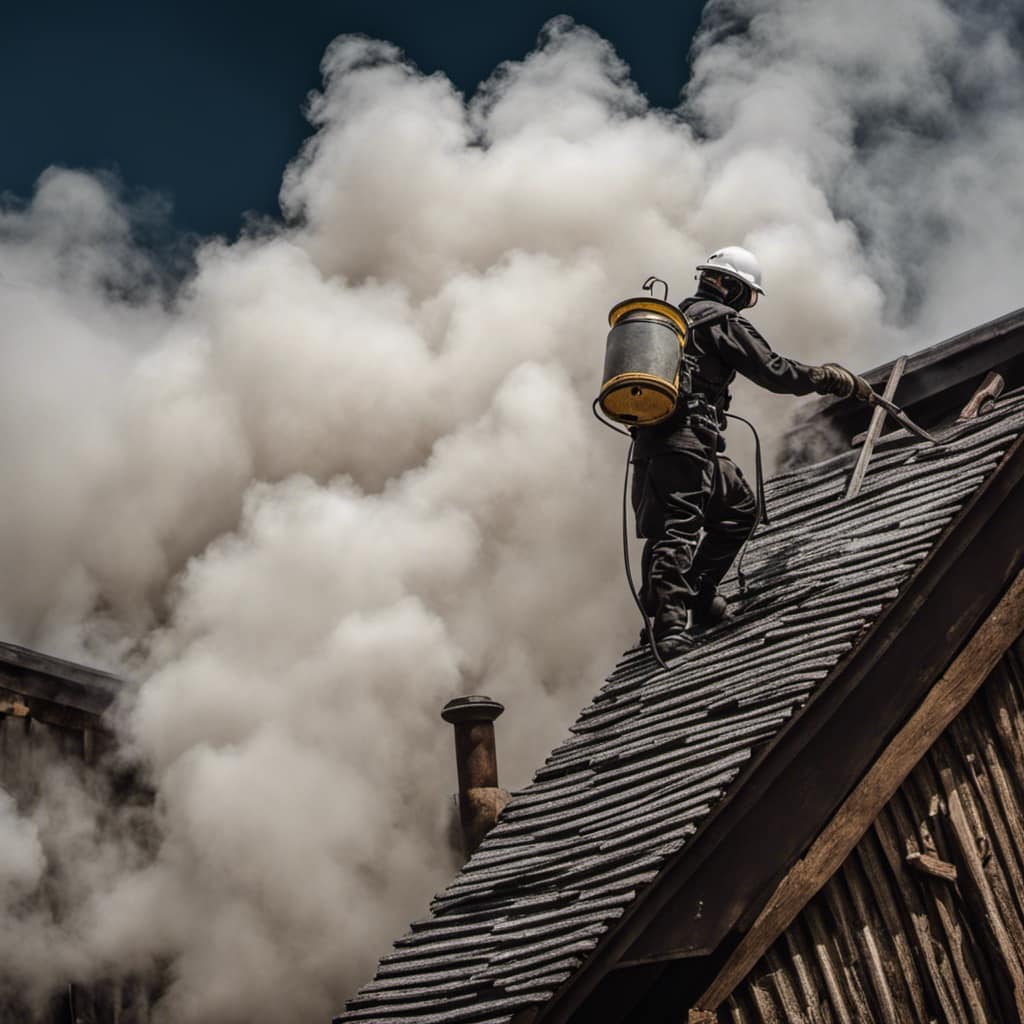
To further enhance the efficiency and safety of my wood stove, I also need to consider the necessary safety measures for handling the intense heat it generates.
Safety Measures: Handling the Intense Heat of a Wood Stove
Handling the intense heat of a wood stove requires me to take necessary safety measures to protect myself and prevent accidents. As someone who regularly uses a wood stove, I understand the importance of being cautious and following proper procedures. Here are some key safety measures to consider:
-
Wear protective clothing: When working near a wood stove, it’s essential to wear heat-resistant gloves and clothing to prevent burns from accidental contact with hot surfaces.
-
Keep a safe distance: Maintaining a safe distance from the wood stove is crucial. I make sure to keep flammable materials, such as curtains or furniture, at least three feet away from the stove to reduce the risk of fire.

-
Use proper ventilation: Adequate ventilation is essential to prevent the buildup of harmful gases, such as carbon monoxide. I ensure that the flue is open and the chimney is clear of any debris before starting a fire in the wood stove.
-
Never leave unattended: It’s vital to never leave a wood stove unattended. Before leaving the room or going to bed, I always make sure the fire is completely extinguished to avoid any potential accidents.
Exploring the Limits: Is There a Maximum Temperature a Wood Stove Can Reach?
I am curious to know if there’s a maximum temperature that my wood stove can reach. Wood stoves are designed to generate intense heat for efficient heating, but it’s essential to understand their temperature limitations. Exploring temperature fluctuations and the importance of proper ventilation can help us comprehend the maximum temperature a wood stove can reach.
Wood stoves can typically reach temperatures between 400°F and 900°F (204°C to 482°C). The exact maximum temperature depends on various factors such as the type and quality of wood used, the size and design of the stove, and how well it’s maintained. Some high-end wood stoves are designed to handle even higher temperatures, reaching up to 1200°F (649°C). However, exceeding these limits can be dangerous and lead to damage or even fire hazards.

Proper ventilation is crucial when using a wood stove. It helps control the temperature and ensures the efficient burning of wood. Insufficient airflow can cause the stove to overheat, leading to potential damage to the stove, nearby combustible materials, or even the entire house. Therefore, it’s important to follow the manufacturer’s guidelines for proper ventilation and regularly clean and maintain the stove to prevent any safety issues.
Frequently Asked Questions
Can I Use My Wood Stove to Cook Food?
Yes, you can use a wood stove to cook food. There are several pros to using a wood stove for cooking, such as the ability to cook during power outages and the unique flavor that wood heat imparts on the food.
However, there are also some cons, such as the need for constant monitoring and regulation of the heat. To successfully cook on a wood stove, some helpful tips include using cast iron cookware, starting with a small fire, and adjusting the airflow to control the temperature.
How Long Does It Take for a Wood Stove to Reach Its Maximum Temperature?
When it comes to wood stoves, it’s important to know how to properly start a fire and regulate the temperature. Understanding these aspects will help you determine how long it takes for a wood stove to reach its maximum temperature.

What Are the Potential Dangers of Using a Wood Stove?
When it comes to using a wood stove, potential health risks and safety precautions should always be taken into consideration. There are a few dangers associated with wood stoves, such as the risk of burns, carbon monoxide poisoning, and fire hazards.
To minimize these risks, it’s important to ensure proper ventilation, keep flammable materials away from the stove, and regularly maintain and clean the stove.
Taking these safety measures can help ensure a safe and enjoyable wood stove experience.
Can I Use Any Type of Wood in My Wood Stove?
I can use various types of wood in my wood stove, but some are better than others. To ensure optimal performance and safety, it’s important to choose the right type of wood.
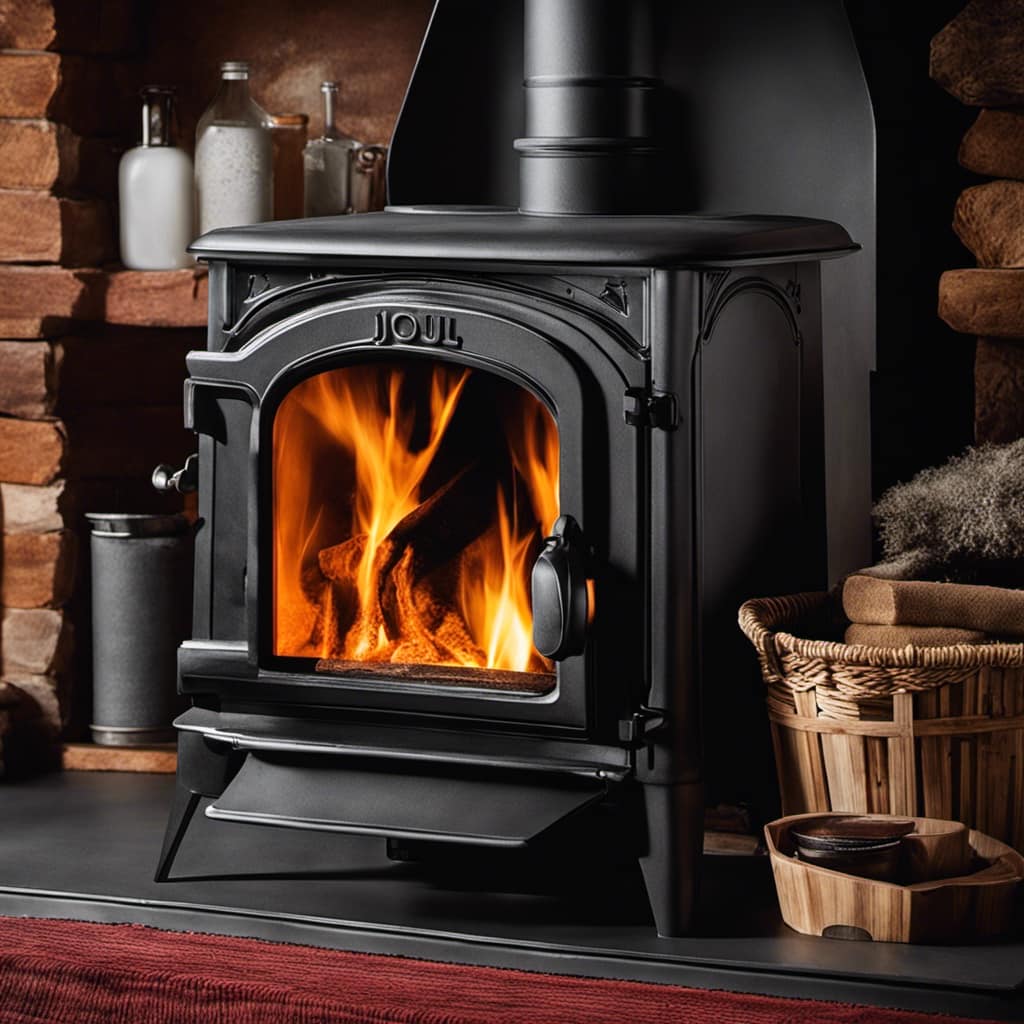
Hardwoods like oak, maple, and birch are ideal as they burn longer and produce more heat.
Softwoods like pine and fir burn faster, but they may create more creosote buildup, requiring more frequent wood stove maintenance.
How Often Should I Clean My Wood Stove to Maintain Its Efficiency?
When it comes to maintaining my wood stove’s efficiency, I’ve learned a thing or two. Proper wood storage is key, making sure it’s dry and well-seasoned. This ensures it burns efficiently, keeping my stove hotter for longer.
But that’s not all. Regular chimney maintenance is a must. By cleaning the chimney regularly, I prevent chimney fires and maintain the stove’s efficiency. It’s a small effort that goes a long way in keeping my wood stove in top shape.

Conclusion
After exploring the science behind wood stove heat generation and the factors that affect its temperature, it’s clear that wood stoves can reach incredibly high temperatures. With the right design, fuel, and efficient operation, these stoves can produce intense heat to keep us warm during the cold winter months.
However, we must always prioritize safety and handle the intense heat responsibly. So, let’s enjoy the cozy warmth of a wood stove while ensuring our well-being.
Growing up surrounded by the vast beauty of nature, Sierra was always drawn to the call of the wild. While others sought the comfort of the familiar, she ventured out, embracing the unpredictable and finding stories in the heartbeat of nature.
At the epicenter of every remarkable venture lies a dynamic team—a fusion of diverse talents, visions, and passions. The essence of Best Small Wood Stoves is crafted and refined by such a trio: Sierra, Logan, and Terra. Their collective expertise has transformed the platform into a leading authority on small wood stoves, radiating warmth and knowledge in equal measure.




